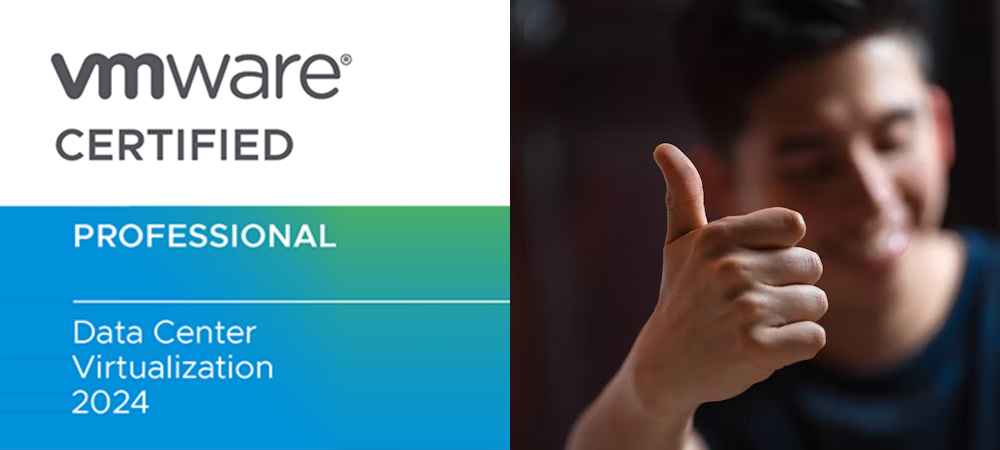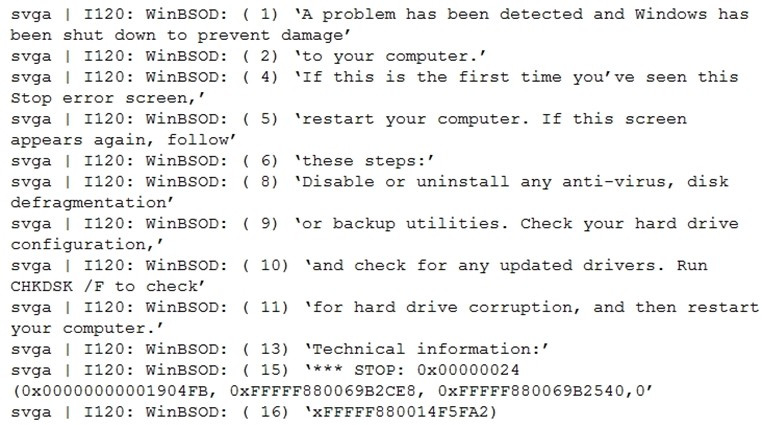Leads4Pass IT suppliers share VMware 2V0-21.23 actual exam questions for free, and online analyze VMware vSphere 8.x Professional (2V0-21.23) exam pain points to help candidates overcome difficulties!

Leads4Pass selects 15 representative cases for online analysis! You can also directly download the 216 complete 2V0-21.23 actual exam questions: https://www.leads4pass.com/2v0-21-23.html (*Choose any practice tool: PDF, VCE, PDF + VCE)
Highlights:
- VMware 2V0-21.23 actual exam questions
- VMware 2V0-21.23 Difficult Question Type Analysis
- Honest recommendation for the best solution for the VMware 2V0-21.23 exam
Selected 15 VMware 2V0-21.23 exam actual questions
| Supplier | Number of exam questions | Featured Cases | Related certification materials |
| Leads4Pass | 216 | 15 | Data Center Virtualization |
Question 1:
An administrator needs to create affinity rules for the following vSphere cluster setup:
The cluster contains two virtual machines (VMs) named app01 and app02.
The cluster includes six hosts named esx11 through esx16.
The app01 and app02 VMs run software licensed to run only on esx11, esx12, or esx13.
vSphere Distributed Resource Scheduler (DRS) is configured
Which steps must the administrator perform to ensure that the licensing requirements are met for app01 and app02?
A. 1. Add all the hosts to a host group.
2. Create a VM-VM anti-affinity rule for app01 and app02
B. 1. Add the esx11 – esx13 hosts to a host group
2. Create a VM-VM affinity rule for app01 and app02
C. 1 Add the VMs to a VM group and the esx11 – esx13 hosts to a host group. 2 Create a VM-Host required rule between the VM group and the host group.
D. 1. Add the VMs to a VM group and the esx11 – esx13 hosts to a host group.
2. Create a VM-Host preferential rule between the VM group and the host group
Correct Answer: C
Explanation:
Add the VMs to a VM group and the esx11 – esx13 hosts to a host group, which allows the administrator to group virtual machines or hosts that share common characteristics or requirements.
Question 2:
What are three options an administrator can configure after creating a vSphere Namespace? (Choose three.)
A. Backup schedule
B. Certificates
C. Storage policies
D. Update policies
E. Permissions
F. Resource and Object limits
Correct Answer: CEF
Explanation:
After creating a vSphere Namespace, three of the options that an administrator can configure are storage policies, which define how storage resources are allocated for objects within a namespace; permissions, which define who can access and manage objects within a namespace; and resource and object limits, which define how much CPU, memory, storage, and network resources can be consumed by objects within a namespace.
References: https://docs.vmware.com/en/VMware-vSphere/7.0/vmware-vsphere-with- tanzu/GUID-C2E9B5C1-D6F1-4E9B-BFFC-C93FC8CCE0BE.html https://docs.vmware.com/en/VMware-vSphere/8.0/vsphere-with-tanzu-services-workloads/GUID-177C23C4-ED81-4ADD-89A2-61654C18201B.html
Question 3:
An administrator is required to configure several Microsoft Windows virtual machines (VMs) to support Secure Boot for a critical secure application.
The following information is provided:
The corporate security policy states that all forms of data encryption must utilize a key provider.
The firmware of each VM is currently set to use a Unified Extensible Firmware Interface (UEFI).
Due to the nature of the application running within the VMs, the guest operating system for each VM is currently a minimum of Windows Server 2008 and Windows 7.
Which security feature should the administrator implement to meet these requirements?
A. vSphere Virtual Machine Encryption
B. vSphere Visualization-Based Security
C. Virtual Intel Software Guard Extensions (vSGX)
D. Virtual Trusted Platform Module (vTPM)
Correct Answer: D
Explanation:
A vTPM is a virtualized version of a physical TPM and is used to protect VMs and their data by tying the cryptographic functions to the hardware of the server on which the VMs are running12. This allows for secure boot, disk encryption, and other security features12. It also supports key providers, which is a requirement in this case12.
Question 4:
An administrator is investigating the reason for a virtual machine restarting. In the vmware.log file, the administrator finds the following error:

What is a likely cause of this virtual machine restart? (Choose the best answer.)
A. Guest operating system fault
B. User or API request to shut down the guest operating system
C. High Availability
D. User or API request to restart the guest operating system
Correct Answer: A
Question 5:
A vSphere environment is experiencing intermittent short bursts of CPU contention, causing brief production outages for some of the virtual machines (VMs). To understand the cause of the issue, the administrator wants to observe near real-time statistics for all VMs.
Which two vSphere reporting tools could the administrator use? (Choose two.)
A. Advanced Performance Charts
B. esxcli
C. desktop
D. Overview Performance Charts
E. esxtop
Correct Answer: AE
Explanation:
Advanced Performance Charts and esxtop are both vSphere reporting tools that can be used to observe near real-time statistics for all VMs. Advanced Performance Charts provides a graphical view of performance data, while esxtop is a command-line tool that provides more detailed information.
Question 6:
Following a merger with another company, an administrator is tasked with configuring an identity source for VMware vCenter so that all vSphere administrators can authenticate using their existing Active Directory accounts. Each company
has user accounts in its own Active Directory forests.
The following additional information has been provided:
The corporate policy states that only Windows-based machine accounts are allowed in Active Directory.
Which action should the administrator take to configure vCenter Single Sign-On (SSO) to meet this requirement?
A. Configure SSO to use Active Directory over LDAP as the identity source.
B. Configure SSO to use OpenLDAP as the identity source.
C. Join the vCenter Server Appliance to the LDAP domain.
D. Configure SSO to use Active Directory (Integrated Windows Authentication) as the identity source.
Correct Answer: A
Explanation:
Integrated Windows Authentication is now depreciated (from v7). “The Active Directory over LDAP identity source is preferred over the Active Directory (Integrated Windows Authentication) option.” https://kb.vmware.com/s/ article/78506
Question 7:
Which feature can an administrator configure to have a copy of critical virtual machines in another cluster? (Choose the best answer.)
A. vSphere Storage vMotion
B. vSphere Fault Tolerance
C. vSphere Replication
D. Instant Clone
Correct Answer: D
Question 8:
If a distributed switch uses the “Route based on physical NIC load” load balancing algorithm, what does the mean send or receive utilization of an uplink need to exceed for the flow of traffic to move to the second uplink?
A. 75 percent of the capacity over a 30-second period
B. 60 percent of the capacity over a 30-second period
C. 60 percent of the capacity over a 40-second period
D. 75 percent of the capacity over a 40-second period
Correct Answer: A
Explanation:
The distributed switch calculates uplinks for virtual machines by taking their port ID and the number of uplinks in the NIC team. The distributed switch tests the uplinks every 30 seconds, and if their load exceeds 75 percent of usage, the port ID of the virtual machine with the highest I/O is moved to a different uplink.
Question 9:
An administrator needs better performance and near-zero CPU utilization from the ESXI hosts for networking functions and processing. The administrator creates a new vSphere Distributed Switch and enables network offload compatibility. Which solution would help achieve this goal?
A. VSphere Distributed Services Engine
B. Data Processing Units (DPUs)
C. vSphere Network I/O Control
D. Universal Passthrough version 2
Correct Answer: B
Explanation:
The solution that would help achieve better performance and near-zero CPU utilization from the ESXi hosts for networking functions and processing is Data Processing Units (DPUs), which are specialized processors that offload network services from the CPU and provide hardware acceleration.
Question 10:
Which action is supported over a VMkernel vMotion TCP/IP stack? (Choose the best answer.)
A. Hot migrations
B. Fault tolerance protection
C. Virtual machine cloning
D. Snapshot creation
Correct Answer: B
Question 11:
What is the basic packaging for vSphere Installation Bundles (VIBs) and metadata in vSphere Lifecycle Manager? (Choose the best answer.)
A. Vendor add-on
B. Base image
C. Component
D. Baseline
Correct Answer: C
Reference: https://ulisesbecerro.com/vsphere-lifecycle-manager/
Question 12:
An administrator is working with VMware Support and Is asked to provide log bundles for the ESXI hosts in an environment. Which three options does Joe the administrator have? (Choose three.)
A. Generate a combined log bundle for all ESXI hosts using the vCenter Management Interface.
B. Generate a separate log bundle for each ESXI host using the vSphere Host Client.
C. Generate a combined log bundle for all ESXI hosts using the vSphere Client.
D. Generate a separate log bundle for each ESXI host using the vSphere Client.
E. Generate a separate log bundle for each ESXI host using the vCenter Management Interface.
F. Generate a combined log bundle for all ESXi hosts using the vSphere Host Client.
Correct Answer: BCD
Explanation:
Options B, C, and D are correct because they are valid methods to generate log bundles for individual or multiple ESXi hosts using different interfaces. Option A and E are incorrect because they are not possible options to generate log bundles for all ESXi hosts using the vCenter Management Interface. Option F is incorrect because it is not possible to generate a combined log bundle for all ESXi hosts using the vSphere Host Client.
Question 13:
A vSphere cluster has the following configuration:
Virtual machines (VMs) are running Production and Test workloads
vSphere Distributed Resource Scheduler (DRS) is enabled
There are no resource pools in the cluster
Performance monitoring data shows that the Production workload VMs are not receiving their fully allocated memory when the vSphere cluster is fully utilized.
Combination of which two steps could the administrator perform to ensure that the Production VMs are always guaranteed the full allocation of memory? (Choose two.)
A. Assign a custom memory share value to the resource pool containing the Production VMs.
B. Assign a memory reservation value to the resource pool containing the Production VMs.
C. Create a parent resource pool for the Production VMs.
D. Create a sibling resource pool for each of the Production and Test VMs.
E. Create a child resource pool for the Test VMs.
Correct Answer: BD
Explanation:
Question 14:
A development team has a recurring need to rapidly replicate hundreds of virtual machines (VMs) for load testing.
Which method should the team use to deploy the VMs? (Choose the best answer.)
A. Linked clones from a content library
B. Instant clones using the vSphere API
C. Full clones using vSphere Auto Deploy
D. Full clones from a template
Correct Answer: C
Question 15:
After a recent unexplained peak in virtual machine (VM) CPU usage, an administrator is asked to monitor the VM performance for a recurrence of the issue.
Which two tools can the administrator use? (Choose two.)
A. vCenter Management Interface
B. Direct Console User Interface (DCUI)
C. vSphere Performance Charts
D. vCenter Command Line Interface
E. ESXi Shell
Correct Answer: CE
Explanation:
To monitor the VM performance for a recurrence of the issue, the administrator can use vSphere Performance Charts, which provide graphical views of various performance metrics for VMs and other objects; or ESXi Shell, which provides command-line access to ESXi hosts and allows running various commands to collect performance data.
References: https://docs.vmware.com/en/VMware-vSphere/7.0/com.vmware.vsphere.monitoring.doc/GUID-D89E8267-C74A-496F-B58E- 19672CAB5A53.html https://docs.vmware.com/en/VMware- vSphere/7.0/com.vmware.vsphere.monitoring.doc/GUID-CDC20FD2-FE1C-4B2C-B99B- E634AC2EEEC9.html
…
Finally:
Honest recommendation for the best solution for the VMware 2V0-21.23 exam: VMware 2V0-21.23 exam actual questions with PDF and VCE practice tools: https://www.leads4pass.com/2v0-21-23.html, helping candidates break through barriers and achieve success.